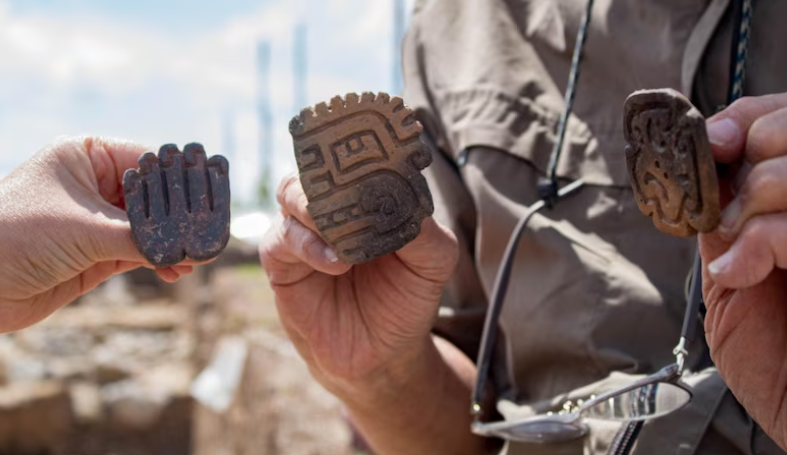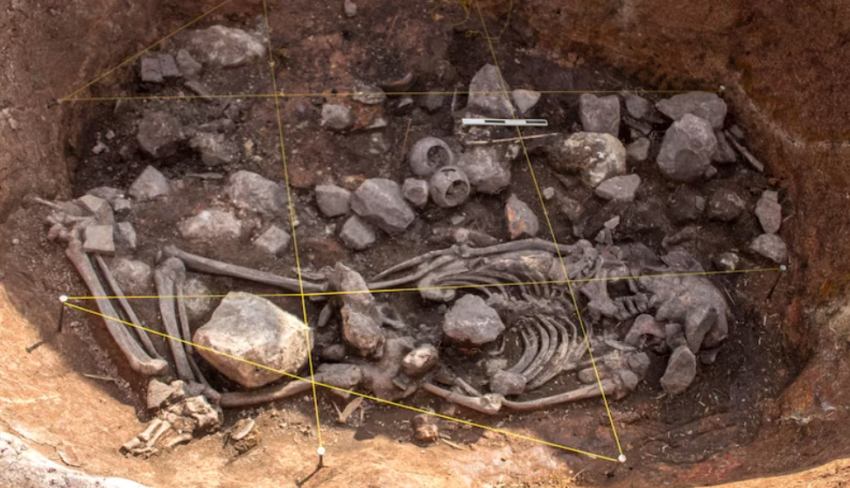Archaeologists in northern Peru have unearthed a 3000 year old priestly tomb that they think may have honored a distinguished religious leader in the Andean country nearly three thousand years ago.
The priest, dubbed the “Pacopampa Priest”, was buried under six layers of ash mixed with black soil, while ornate ceramic bowls and seals with ancient ritual body paint used for the elite were found in the tomb, Ministry of Culture of Peru said in a statement.
Along the upper margins of the tomb, there were also discovered two seals: one had a jaguar design facing west and the other had an anthropomorphic face gazing east.



The head of the project, Yuji Seki, described the huge size of the priestly tomb as “very peculiar,” as well as the position of the person lying face down with one half of his torso extended and feet crossed. Also found on the body was a bone in the shape of a tupu, a large needle used by Andean Indians to hold cloaks and ponchos, which he said could have been used to hold a blanket.
“Though this person is a man, the associations are very peculiar,” said Seki. “I think this was a leader in his time.”
The priest would have been buried around 1,200 B.C., making him roughly five centuries older than the tombs of the “Lady of Pacopampa” and the “Priests of the Serpent Jaguar of Pacopampa,” which were discovered in 2009 and 2015, respectively. However, last year’s find of the “Priest of the Pututos” is believed to be older. The Pacopampa Archaeological Project has been working in the area since 2005, the ministry said.
Pacopampa is an archaeological site in the Cajamarca department in the northern highlands of Peru. It presents the remains of a monumental ceremonial center made of cut and polished stone. It is among the largest ceremonial centers in the northern highlands of Peru. The University of San Marcos is also constantly interested in it.
